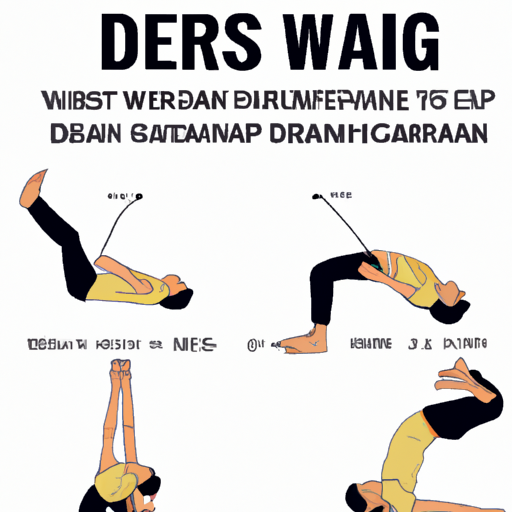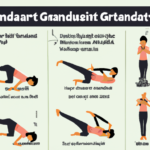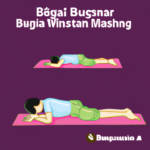“Unlock Your Inner Strength with Dhanurasana Practice!”
Introduction
Dhanurasana, or the Bow Pose, is an energizing and invigorating yoga pose that helps to strengthen the back and abdominal muscles. It is a great pose to practice if you are looking to improve your posture, increase flexibility, and build strength. This pose can also help to improve digestion and reduce stress. In this article, we will discuss how to do Dhanurasana practice safely and effectively. We will cover the steps of the pose, the benefits of the pose, and some modifications and variations that can be used to make the pose more accessible.
Step-by-Step Guide to Doing Dhanurasana: A Beginner’s Guide
Dhanurasana, or the Bow Pose, is a powerful yoga posture that can help to strengthen the back and abdominal muscles, improve posture, and increase flexibility. It is an excellent pose for beginners, as it can be modified to suit any level of experience. This step-by-step guide will help you to safely and effectively practice Dhanurasana.
1. Begin by lying on your stomach with your arms by your sides and your forehead resting on the floor.
2. Bend your knees and reach back to grab your ankles. Make sure that your palms are facing up and your elbows are close to your body.
3. Inhale deeply and, as you exhale, lift your chest and thighs off the floor. Keep your neck and head in line with your spine.
4. Hold the pose for a few breaths, focusing on your breath and keeping your body relaxed.
5. To release the pose, slowly lower your chest and thighs back to the floor.
6. Relax in Child’s Pose for a few breaths before repeating the pose.
Remember to practice Dhanurasana with caution and to listen to your body. If you experience any pain or discomfort, stop immediately and consult a qualified yoga instructor. With regular practice, you will soon be able to reap the many benefits of this powerful pose.
Benefits of Doing Dhanurasana: Why You Should Incorporate It Into Your Yoga Practice
Dhanurasana, or the Bow Pose, is an important part of any yoga practice. This pose is beneficial for both physical and mental health, and can help to improve posture, flexibility, and strength.
Physically, Dhanurasana helps to strengthen the back muscles, as well as the abdominal muscles. It also helps to improve posture by stretching the spine and strengthening the core. This pose can also help to improve digestion, as it massages the abdominal organs. Additionally, it can help to reduce stress and tension in the body, as it stretches the chest and shoulders.
Mentally, Dhanurasana can help to improve focus and concentration. It can also help to reduce stress and anxiety, as it encourages deep breathing and relaxation. This pose can also help to improve self-confidence, as it requires a certain amount of strength and balance.
Overall, Dhanurasana is a beneficial pose that can help to improve physical and mental health. It is a great pose to incorporate into any yoga practice, as it can help to improve posture, flexibility, strength, focus, and self-confidence.
How to Modify Dhanurasana for Different Levels of Flexibility
Dhanurasana, or the Bow Pose, is a powerful yoga posture that strengthens the back and abdominal muscles while stretching the chest, shoulders, and thighs. It is an excellent pose for improving flexibility and balance. However, due to the intensity of the pose, it is important to modify it for different levels of flexibility.
For Beginners:
For those who are just beginning to practice yoga, it is important to start with a modified version of Dhanurasana. Begin by lying on your stomach with your arms at your sides. Bend your knees and reach back to grab your ankles. Gently pull your feet towards your buttocks, keeping your knees hip-width apart. Hold the pose for a few breaths, then release.
For Intermediate Practitioners:
For those with more experience in yoga, a more advanced version of Dhanurasana can be attempted. Begin by lying on your stomach with your arms at your sides. Bend your knees and reach back to grab your ankles. Gently pull your feet towards your buttocks, keeping your knees hip-width apart. Lift your chest off the ground and arch your back. Hold the pose for a few breaths, then release.
For Advanced Practitioners:
For those with a high level of flexibility, a more challenging version of Dhanurasana can be attempted. Begin by lying on your stomach with your arms at your sides. Bend your knees and reach back to grab your ankles. Gently pull your feet towards your buttocks, keeping your knees hip-width apart. Lift your chest off the ground and arch your back. Reach your arms back and grab your ankles. Hold the pose for a few breaths, then release.
No matter what level of flexibility you have, it is important to practice Dhanurasana with caution. Listen to your body and stop if you feel any pain or discomfort. With regular practice, you will be able to increase your flexibility and strength.
Tips for Mastering Dhanurasana: What You Need to Know
Dhanurasana, or the Bow Pose, is an important yoga pose that can help to improve flexibility, strength, and balance. It is a challenging pose, but with the right tips and techniques, it can be mastered. Here are some tips for mastering Dhanurasana:
1. Warm Up: Before attempting Dhanurasana, it is important to warm up your body. This can be done by doing some light stretching and yoga poses, such as Cat-Cow, Downward Dog, and Child’s Pose. This will help to prepare your body for the pose and reduce the risk of injury.
2. Engage Your Core: When performing Dhanurasana, it is important to engage your core muscles. This will help to keep your body stable and balanced. To engage your core, focus on drawing your navel towards your spine and tightening your abdominal muscles.
3. Keep Your Neck Relaxed: When performing Dhanurasana, it is important to keep your neck relaxed. This will help to prevent any strain or tension in the neck area. To do this, focus on keeping your chin slightly tucked and your gaze directed towards the floor.
4. Breathe Deeply: When performing Dhanurasana, it is important to focus on your breath. Take deep, slow breaths and focus on the sensation of your breath moving through your body. This will help to keep your body relaxed and your mind focused.
5. Modify the Pose: If you are having difficulty mastering Dhanurasana, it is important to modify the pose. You can do this by using a yoga strap or a block to help support your body. This will help to make the pose more accessible and reduce the risk of injury.
By following these tips, you can master Dhanurasana and reap the many benefits it has to offer. With practice and patience, you will be able to perfect the pose and enjoy the benefits it has to offer.
Common Mistakes to Avoid When Doing Dhanurasana
When practicing Dhanurasana, it is important to be mindful of the common mistakes that can occur. Here are some of the most common mistakes to avoid when doing Dhanurasana:
1. Not warming up: Before attempting Dhanurasana, it is important to warm up the body with some light stretching and breathing exercises. This will help to prepare the body for the pose and reduce the risk of injury.
2. Not engaging the core: Engaging the core is essential for maintaining balance and stability in the pose. Make sure to draw the navel in towards the spine and keep the core engaged throughout the pose.
3. Not keeping the neck and spine aligned: It is important to keep the neck and spine in a straight line throughout the pose. This will help to ensure that the pose is performed correctly and reduce the risk of injury.
4. Not breathing deeply: Breathing deeply is essential for maintaining balance and stability in the pose. Make sure to take slow, deep breaths throughout the pose.
5. Not using props: Props such as blocks and straps can be used to help support the body in the pose. This will help to ensure that the pose is performed correctly and reduce the risk of injury.
By avoiding these common mistakes, you can ensure that you are performing Dhanurasana correctly and safely.
How to Incorporate Dhanurasana Into Your Daily Yoga Routine
Dhanurasana, or the Bow Pose, is an excellent yoga pose to incorporate into your daily yoga routine. This pose helps to strengthen the back muscles, improve posture, and increase flexibility. It also helps to improve digestion and reduce stress.
To begin, lie on your stomach with your arms at your sides. Bend your knees and reach back to grab your ankles. As you inhale, lift your chest and thighs off the ground, using your arms and legs to pull your body into the shape of a bow. Keep your neck and head in line with your spine. Hold the pose for five to ten breaths, then slowly release your ankles and lower your body back to the ground.
To increase the intensity of the pose, you can try lifting your arms off the ground and reaching them back to grab your ankles. You can also try lifting your head and chest higher off the ground.
To make the pose more accessible, you can place a yoga block or rolled-up blanket under your hips for support. You can also use a strap to help you reach your ankles.
Dhanurasana is a great pose to practice in the morning to help energize your body and mind. It can also be practiced in the evening to help relax the body and mind before bed.
By incorporating Dhanurasana into your daily yoga routine, you can reap the many benefits of this pose. With regular practice, you will notice improved posture, increased flexibility, and a stronger back.
Conclusion
Dhanurasana is a great way to improve your flexibility, strength, and balance. It can also help to reduce stress and improve your overall health. With regular practice, you can improve your posture and reduce back pain. Remember to always practice with caution and listen to your body. With patience and dedication, you can master this pose and reap the many benefits it has to offer.




